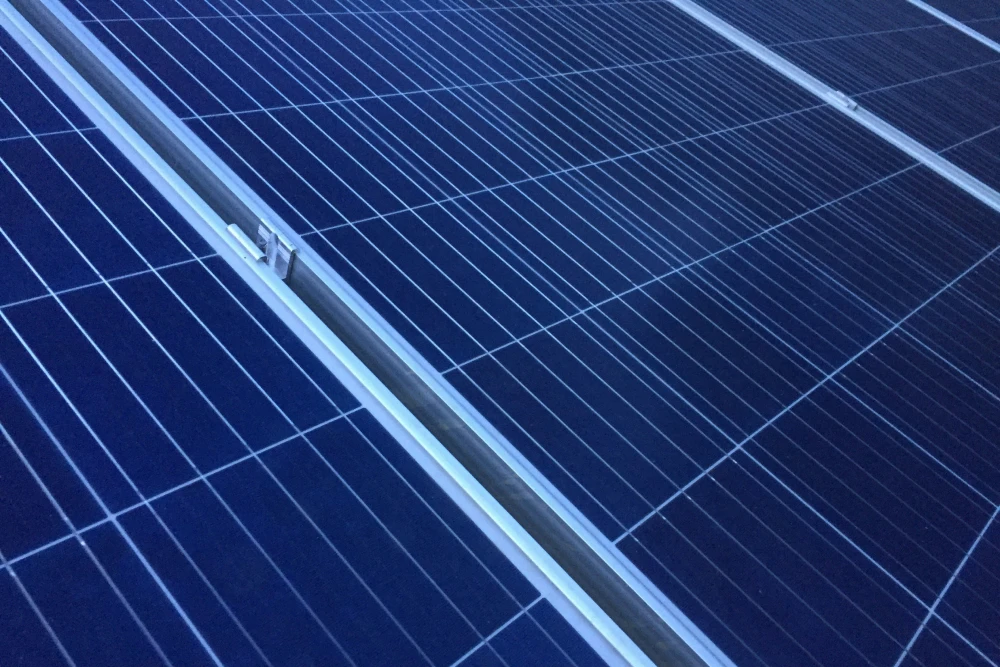The Largest Solar Farms in Texas: 2025
3 minute readTexas's largest solar farms, upcoming projects, and their impact on grid reliability.
Home > Learning Center > Energy Production > How Do Solar Panels Generate Electricity?
5 minute read • Last update September 2024

Most people are already familiar with the basic principles of how solar energy is harnessed: it is captured from the sun’s rays. Along with other clean energy sources like wind power and hydropower, solar is a vital component of a growing base of renewable energy sources. These sources have the potential to significantly reduce our reliance on fossil fuels and decrease greenhouse gas emissions.
As with any other energy source, there are some pros and cons of solar energy to consider. However, its potential is undeniable. In just one hour, the Earth receives enough sunlight to power the entire planet – encompassing everything from residential properties and individual electronic devices to large-scale industrial and commercial operations.
Ready to get more technical about how solar energy is converted into electricity? Then read on! Alternatively, if you want to develop a solid baseline understanding before moving on to the nitty gritty of how solar works, you can read more in our intro to solar energy blog.
To fully understand how solar works, you’ll need to learn more about how energy from the sun can be converted into usable electricity. Let’s begin with an overview of the sun as a power source before examining the two main mechanisms used to convert sunlight into electrical current.
Solar power on Earth begins about 93 million miles away. Way out in space there’s a gargantuan ball made up of gas, mostly helium and hydrogen. We all call it “the Sun.”
Inside the core of the Sun, there’s a process constantly occurring called nuclear fusion. This means that atoms are slamming into each other so hard that they fuse together. In the Sun’s core, hydrogen atoms are fusing together to form helium atoms. Now imagine this process occurring hundreds of millions of times per second. Humans can’t technically visualize anything at this scale, but you just need to know that it’s an incredible amount of energy being produced at all times.
After nuclear fusion happens in the core of the Sun, the energy produced (heat, light, and radiation) travels outwards towards the surface. When the energy finally reaches the surface, or the photosphere, it’s released into space as sunlight. Sunlight is manifested in several ways including visible light, infrared radiation, and ultraviolet light.
Sunlight races away from the Sun in all directions at over 186,000 miles per second. The sunlight headed in the direction of Earth reaches us in about 8 minutes and 20 seconds.

Solar panels are made up of rows of solar cells or photovoltaic cells. The cells are flat, square structures constructed of glass and silicon layers with dimensions of between 0.5 and 6 square inches.
There are other types of solar cells that have different architectures, but for the sake of this article we will focus on PV cells as they are the most common.
Now that you understand how solar panels are constructed, let’s dive into how they generate electricity.
There are two primary ways in which solar panels generate electricity: thermal conversion and photovoltaic effect. Photovoltaic solar panels are much more common than those that utilize thermal conversion, so we’ll be focusing on PV solar panels.
Thermal conversion utilizes solar energy for heating. Thermal systems concentrate solar radiation using mirrors or glass casing and lenses to absorb sunlight and heat water or glycol (an organic compound belonging to the same family as alcohol). The liquid, now heated to high temperatures, produces steam to drive a turbine and generate electricity.
If you’ve found this explanation of solar energy and how it works helpful, then you’re probably already interested in exploring renewable electricity plans.
At BKVE, our primary goal is to help Texans save money by offering low-impact energy solutions that include a mix of renewables. Our homeowner electricity plans have transparent terms, and there are no extra fees or marketing gimmicks, guaranteed! Enter your zip code today to learn more and find the right plan for your household.
Graham Lumley, Digital Marketing Manager at BKV Energy, leads digital and traditional marketing strategies, focusing on educating Texans about the state's deregulated energy market. With over 8 years of marketing experience, he creates content to help consumers understand and save on their energy bills, bringing a fresh and dynamic approach to the industry.

Texas's largest solar farms, upcoming projects, and their impact on grid reliability.

Two main types of solar panels There are two main categories of solar panels: photovoltaic and thermal conversion. Types of
Get $50 off your electric bill!
Use code BKVEJOINUS50
Enter your zip code to shop BKV Energy's affordable, fixed-rate Texas electricity plans. Use the promo code for $50 off your electric bill.